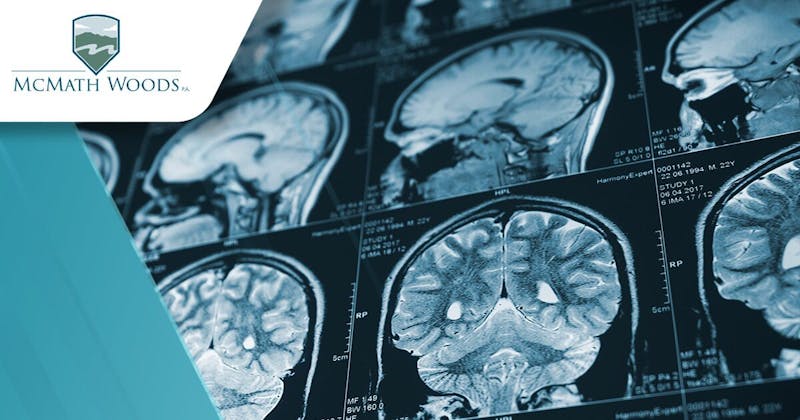
Like many other states, Arkansas sees its fair share of wrecks each year. While many of those individuals who are involved walk away from them unscathed, unfortunately, that’s not the case for others.
Head injuries, most of which lead to traumatic brain injuries (TBIs), often occur.
If you’re curious about how common head injuries are after a car accident, keep reading where we’ll deep-dive into what readily available data says about this.
Statistics Regarding Traumatic Brain Injuries and Motor Vehicle Accidents
In the introduction, we mentioned that head injuries, TBIs included, commonly result from car crashes.
Data analyzed by the authors of a 2017 Traffic Injury Prevention journal study regarding the connection between auto accidents and head injuries concluded the following from reviewing nearly 4 million accident-related medical records:
- At least 16,980 (+ or – a margin of error of 2,411) adults suffered severe head injuries such as a diffuse axonal injury, whereas this affected 1,453 children (adding or subtracting 318)
- An approximate 49,881 (+ or – 9,729) of adults received moderate or slightly more severe abbreviated injury scale (AIS) level 2 injuries, which include concussions and skull fractures, while the rate for children is around 2,581 (with a margin of error of + or – 683)
- Around 6,753 (+ or – a margin of error of 882) adults suffered head injury-related fatalities, whereas this affected around 466 (adding or subtracting 132) children
While certainly not all head injuries cause TBIs, many do, as the statistics outlined above show.
Data published by the National Institutes for Health (NIH) suggest that as many as 1.7 million people in the U.S. receive brain injury diagnoses. Let’s assume that was the same injury rate in 2019 when the Centers for Disease Control (CDC) determined that as many as 223,000 of those injuries were bad enough to warrant the patient’s hospitalization.
If this is the case, then it’s likely that a significant number of motorists were affected.
What Types of Head Trauma Most Commonly Occurs in Car Crashes?
Injuries don’t always stem from making contact with another object, like a dashboard or steering wheel, but can occur by force or something penetrating it as well. Thus, here are some examples of the most common moderate to severe head injuries diagnosed after car accidents:
- Concussions: This type of head injury often results from a person’s brain shifting forcibly front-to-back within their skull. While symptoms it causes, including blurry vision, confusion, and loss of consciousness, are often depicted as minor and temporary, in recent years, researchers have started to better understand that this type of TBI can have long-term quality-of-life implications for patients, including potentially causing chronic traumatic encephalopathy (CTE).
- Cranial hematomas: While there is a small amount of cerebrospinal fluid between our brains and skulls, it’s not enough to protect this vital organ from potential trauma. This is one of the reasons why attorneys like ours will often urge patients to go for a medical assessment even if they’re not feeling unwell after a car crash. It’s possible that a patient could suffer a contusion (bruise) that gives way to a blood clot or brain bleed (cranial hematoma) that could not only affect a motorist’s ability to think or speak but also cause their sudden death.
- Diffuse axonal injuries: These types of brain injury occur similarly to both concussions and cranial hematomas in that a sudden shift or the organ rotating within or colliding with the more rigid skull can cause a tearing of axons, which are connective nerve fibers. DAIs often affect different components of the brain and lead to comas.
- Penetrative brain injuries: A windshield breaking and penetrating a patient’s skull and brain is just one example of a way in which a driver may end up with this type of injury. The immediate danger associated with this type of injury is that it can cause a sudden loss of blood, leading to a motorist bleeding out by the time help arrives. Also, while surgeons are sometimes able to safely remove the object that penetrated the skull, complications can arise in doing so, like further brain damage.
The force with which a person strikes their head or has it forcibly shifted forward and back in a crash can also cause neck problems, which can leave behind whiplash, herniated discs, and even spinal cord injuries.
How Head and Traumatic Brain Injuries Can Affect Auto Accident Victims
While we certainly didn’t cover all the different types of head injuries caused by car accidents above, we highlighted some of the most concerning ones. The impact each has on individuals who suffer them is different. Some examples of long-term impairments they may cause include:
- Vision problems, including double or blurry vision and blindness
- Cognitive deficits like memory issues or delayed processing of information
- Speech impediments
- Difficulties with coordination and, thus, mobility
- Dizziness
- Headaches
All different types of accidents can cause head injuries, including rear-end crashes, T-bone collisions, head-on wrecks, etc. The impact that a head or brain injury has on a patient greatly depends on the type of injury and its severity.
Getting Help If You Injured Your Head in a Car Wreck
How quickly a person seeks medical care after suffering a head injury matters. In many cases, the sooner after their car accident they seek medical attention, the better their long-term prognosis. If left unaddressed, a head injury can cause someone to suffer long-term functional impairments and die — no matter how asymptomatic or “fine” you may initially think you feel.
Receiving top-level care can be costly. While one of our local trauma hospitals in Little Rock can likely provide you with the quality of care you need, sometimes transportation to a specialized care facility outside of the area is necessary.
Additionally, head injuries treated through an operation may need to be re-addressed surgically, resulting in added costs.
Also, rehabilitative care to help a head or TBI patient restore cognitive functions and others may take time and be expensive. A victim’s residence in an assisted living facility may be necessary if they cannot afford around-the-clock care to assist with their basic needs.
At McMath Woods P.A., we’ve helped countless individuals like yourself after they’ve suffered serious head trauma. We’ve aided them in recovering compensation that allows them to receive the best possible care and live their best possible lives in light of the circumstances.
We want to help you do the same.

